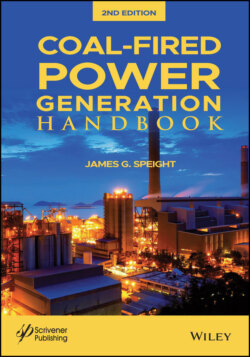Читать книгу Coal-Fired Power Generation Handbook - James Speight G., James G. Speight - Страница 99
4.3.2 Short-Term Storage
ОглавлениеSimilar actions to those described for long-term storage can (should) also be applied to the short-term storage of coal in stockpiles, particularly at unit train loading facilities with reclaiming tunnels. The major hazard associated with coal recovery tunnels is the possible formation of an explosive atmosphere originating from accumulation of methane and coal dust (Stahl and Dalzell, 1965). Methane often will accumulate despite what appears to be adequate ventilating practice; dust accumulations vary with the surface moisture of the coal.
The release of emanation of methane from coal forms a sluggish atmosphere and may inhibit low temperature oxidation, exceptionally in coals with high content of gas but methane is also a potential as a source of energy (Thomas, 1992). Furthermore, as the methane desorption decreases sharply with time, more of the coal surface will be exposed to oxidation.
Closed-end coal recovery tunnels should be equipped with adequate escape passages that, if properly constructed, can also serve as ventilation ducts. Tunnel walls should be washed down frequently to prevent dust accumulation and welding, and electrical repair work should not be conducted in the tunnel during reclaiming operations or if gas or dust is present in the tunnel. Fire-fighting and respiratory protective equipment should be readily available.
